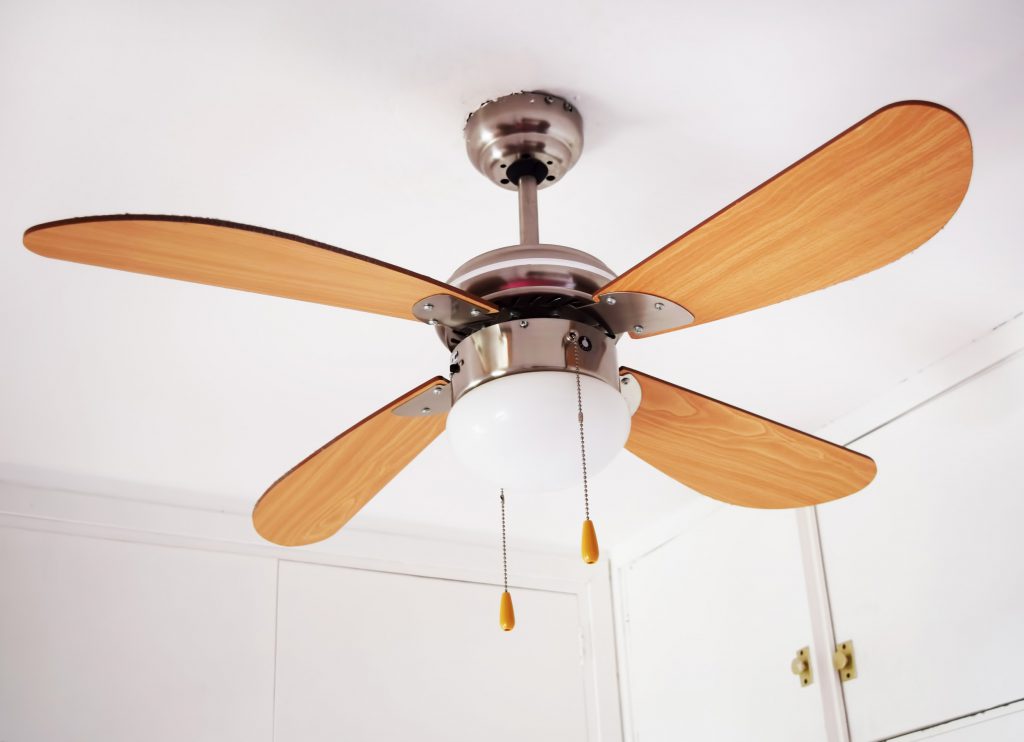Ceiling fans are not just a functional addition to your home; they also add style and comfort. With so many available options, choosing the right ceiling fan for your home can be overwhelming. From size to design, energy efficiency to noise level, various factors come into play when making this decision.
This guide aims to simplify the process and provide you with all the necessary information to choose a ceiling fan that perfectly fits your needs and elevates the ambiance of your living space, whether it’s for the bedroom, living room, or any other area in your home.
Step-by-Step Approach to Choose the Perfect Ceiling Fan
Step 1: Assess the Size and Layout of the Room
The first step in choosing a ceiling fan is to consider the size and layout of the room where it will be installed. Measure the square footage and height of the room and any architectural features that may affect air circulation, such as sloped or vaulted ceilings.
Step 2: Determine Your Ceiling Height
Ceiling fans come in different mounting options to accommodate various ceiling heights. Measure your ceiling height to determine whether you need a flush-mounted (for low ceilings), standard downrod-mounted, or angled-mount fan (for sloped ceilings).
Step 3: Consider Fan Size for Optimal Performance
Choosing an appropriately sized fan ensures optimal air circulation in your space:
- Rooms under 75 square feet, opt for a 29-36 inch fan.
- Rooms between 76-144 square feet, choose a fan with a diameter of 36-42 inches.
- Larger areas exceeding 144 square feet, go for fans measuring at least 52 inches.
Step 4: Decide on Blade Number and Pitch
Consider the number of blades on your desired ceiling fan. While three-blade fans are more common and provide adequate airflow, four- or five-blade options can contribute to smoother airflow while running quieter. Additionally, pay attention to blade pitch—the angle at which they are set—which affects how effectively the fan moves air.
Step 5: Determine Desired Style and Finish
Ceiling fans come in countless styles ranging from traditional to contemporary designs. Choose one that complements your home’s decor style while also considering finishes that match other fixtures in the room.
Step 6: Evaluate Energy Efficiency Ratings
Look for energy-efficient models that help reduce electricity consumption without compromising performance.
Step 7: Consider Additional Features
Explore features like remote controls, lighting fixtures, fan speed options, and reversible motor functionality. These additional features enhance convenience and add functionality to ceiling fans.
By following this step-by-step approach, you can confidently select the perfect ceiling fan for your home.
Considerations
When choosing a ceiling fan for your home, there are several key considerations to keep in mind:
- Budget: Determine how much you will spend on a ceiling fan, as prices vary significantly based on brand, features, and quality.
- Noise Level: Look for ceiling fans that operate quietly, especially if you plan to install them in bedrooms or living areas where noise can be a nuisance.
- Energy Efficiency: Opt for fans with an ENERGY STAR or high energy-efficiency ratings. These models consume less electricity and help reduce utility bills.
- Lighting: Consider whether you want a ceiling fan with built-in lighting or prefer separate lighting fixtures.
- Blade Materials: Blades can be made of various materials, such as wood, metal, or acrylic. Each material has its own aesthetic appeal and maintenance requirements.
- Control Options: Decide whether you prefer manual, wall-mounted, or remote controls for operating your ceiling fan’s speed settings and other functions.
- Warranty and Customer Support: Check the manufacturer’s warranty coverage and consider their reputation for customer support before finalizing your decision.
- Installation: Evaluate whether you have the necessary skills and tools to install the ceiling fan yourself or if hiring a professional installer would be more appropriate.
Styles and Finishes
When choosing the style and finish of your ceiling fan, numerous options are available to suit any home décor, including:
- Traditional ceiling fans feature elegant, timeless designs with decorative elements and details like ornate fan blades or classic finishes such as brass or bronze.
- For modern and minimalist aesthetics, contemporary ceiling fans offer sleek lines, understated designs, and often come in neutral colors like white, silver, or black.
- If you want to add a touch of rustic charm or farmhouse flair to your home, consider ceiling fans featuring distressed wood blades or vintage-inspired finishes like weathered iron or aged bronze.
- Industrial-style ceiling fans highlight a raw, utilitarian design with features like exposed hardware, metal blades, and metallic finishes such as brushed nickel or matte black.
- Beach and tropical-themed ceiling fans feature palm leaf-shaped blades made from natural materials (like bamboo) combined with casual finishes such as rattan or wicker accents.
The Importance of Energy Efficiency
Energy efficiency is a crucial factor to consider when choosing a ceiling fan for your home. When selecting an energy-efficient ceiling fan, always look for certification labels such as ENERGY STAR. Here’s why it’s important:
- Reduced Energy Consumption: Energy-efficient ceiling fans consume less electricity than standard fans, helping you save on energy costs in the long run.
- Environmental Impact: By choosing an energy-efficient ceiling fan, you actively contribute to environmental conservation by reducing your carbon footprint.
- Enhanced Comfort: Efficient ceiling fans are designed to move air effectively, creating a cooling breeze that enhances comfort without relying solely on air conditioning. This can reduce reliance on AC or allow you to set it at higher temperatures, resulting in additional cost savings.
- Longer Lifespan: Energy-efficient ceiling fans are often built with high-quality, durable, and reliable components that last longer.
Additional Features
Apart from the basic functionalities, ceiling fans can have additional features that enhance their convenience and functionality. Here are some popular additional features to consider:
- Remote Control
- Wall Controls
- Integrated Lighting
- Reversible Motor
- Timers
- Variable Speed Settings
Conclusion
Choosing the right ceiling fan for your home involves considering various factors such as size, layout, style, energy efficiency, and additional features. By following a step-by-step approach and these considerations, you can make an informed decision that suits your functional needs and aesthetic preferences.
Ceiling Fan Cables, Receivers, and Remote Controls
Take control of your comfort and convenience now. Explore the range of ceiling fan cables, receivers, and remote controls available from Replacement Remotes. Shop online or call us directly today.


